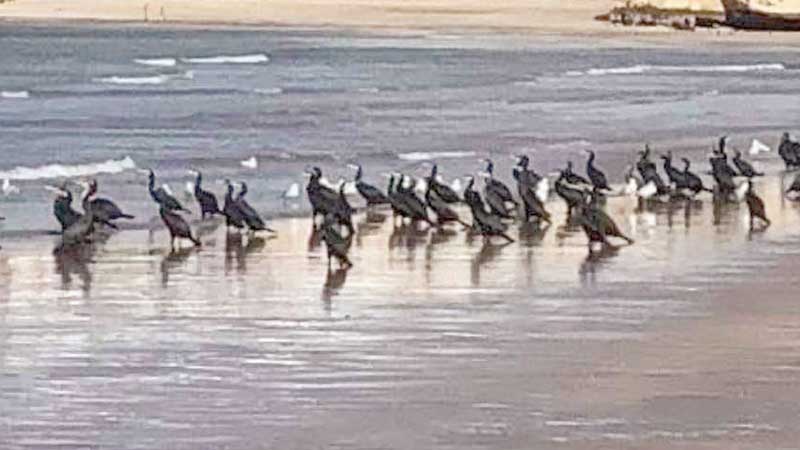

With Oman’s beaches opened and as visitors started to pour in, migratory birds have also begun to fly in to Oman’s shores, complementing the flow of environment cycle.
Citizens and residents, both bachelors and families seem to be exploring their favourite, long-lost beaches and basking in the morning and setting sun.
The Supreme Committee tasked with tackling developments resulting from coronavirus (COVID-19) decided to let many facilities and sectors open, beaches being an important area, after being closed for more than eight months.
Out of the migratory birds that visit Oman, cormorants, the annual visitors, take the advantage of spending summer away from their origin and Oman seemingly tops their ‘list of preferences’.
“Cormorants are migratory coastal birds and annual visitors to Oman shores,” said Maggie Jeans, one who observed the arrival of these birds.
Cormorants prefer to build their colonies among cliffs, islets, shores and even trees.
Their body weight, according to research, can range from 0.35 to 5 kilograms with wing span of about 45-100 centimetres.
Their four toes are connected with webbing similar to that of a duck.
“They fly in formation like Canadian geese. When the leader sights a shoal of fish they land on the water and dive to catch them in a frenzy of splashing.”
Cormorants then scramble onto the rocks to quickly dry out their wings before they take a leap to the next beach.
Oman plays host to the Socotra cormorant which is now an endangered species listed as vulnerable.
The Socotra cormorant is an almost entirely blackish bird with long neck and a total length of about 80 centimetres.
They can stay submerged for up to 3 minutes, the maximum for a cormorant and they are capable of deep diving upto 45 metres.
Bird watchers say they fly here annually from the Socotra Island, off the coast of Yemen. The Qurum mangroves are spawning ground for fish, so an ideal location for cormorants and other sea birds.
Oman’s Musandam too has a large number of cormorants often seen perched on the fjords, rocks that jut out form the sea and the mountains that face the sea.
KABEER YOUSUF
@kabeeryousef
Oman Observer is now on the WhatsApp channel. Click here



